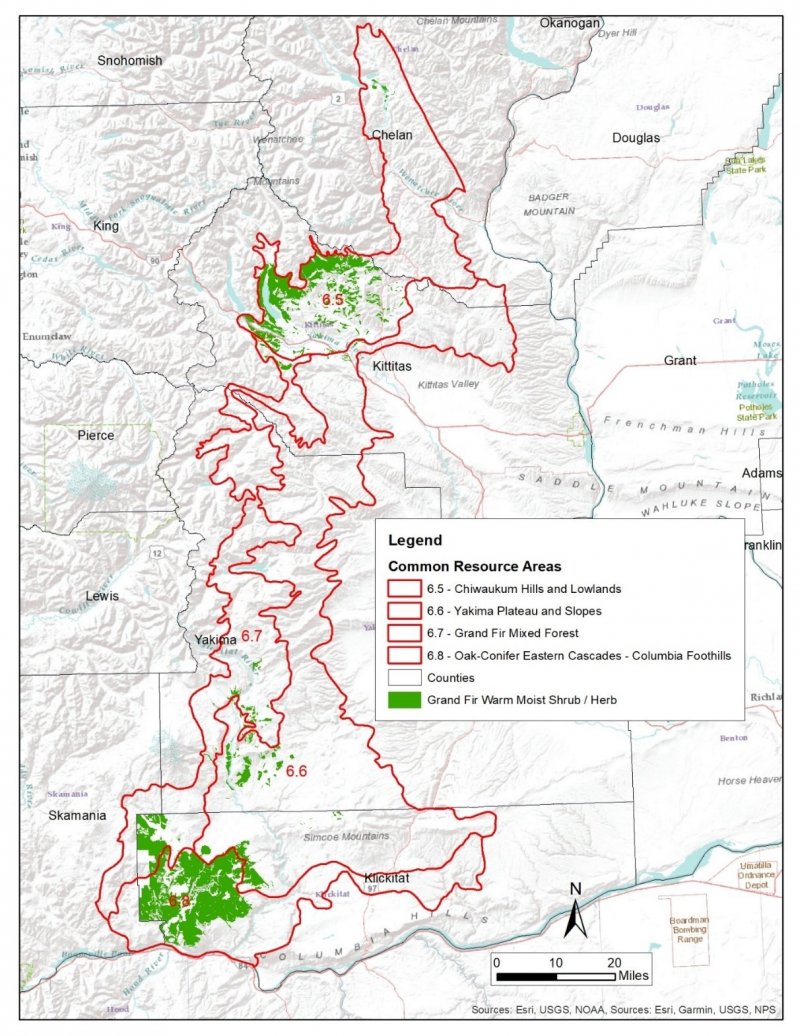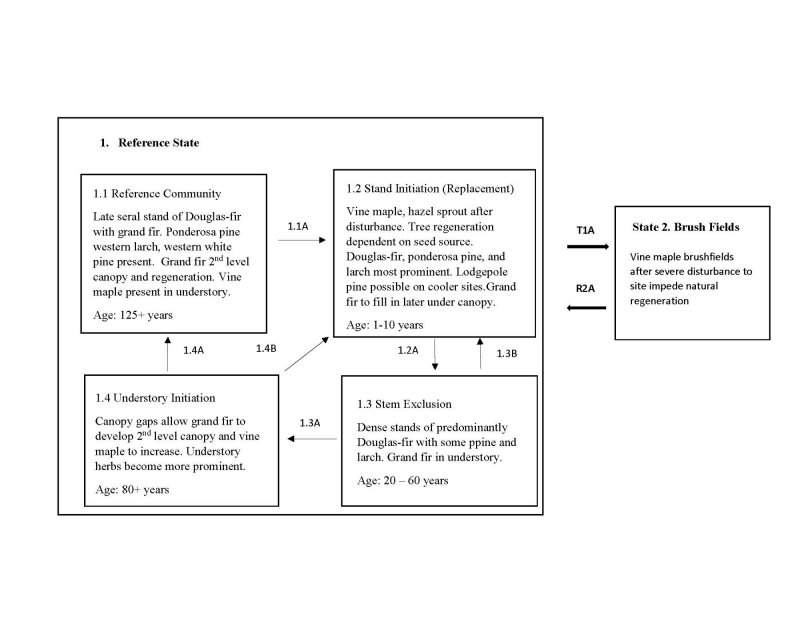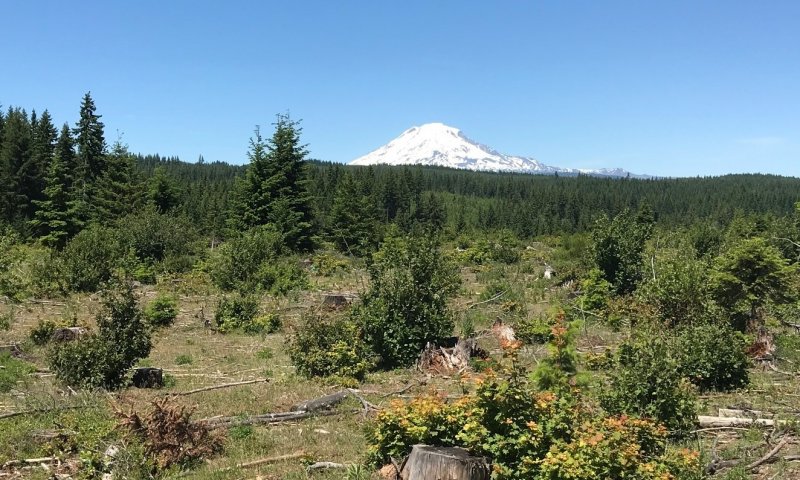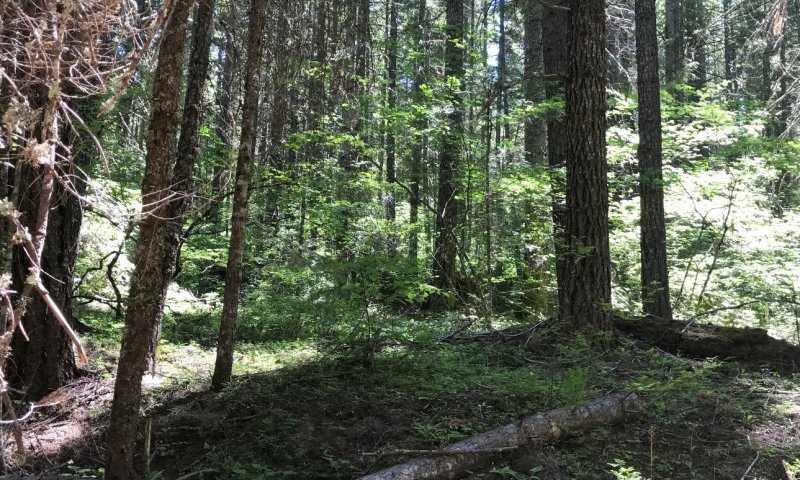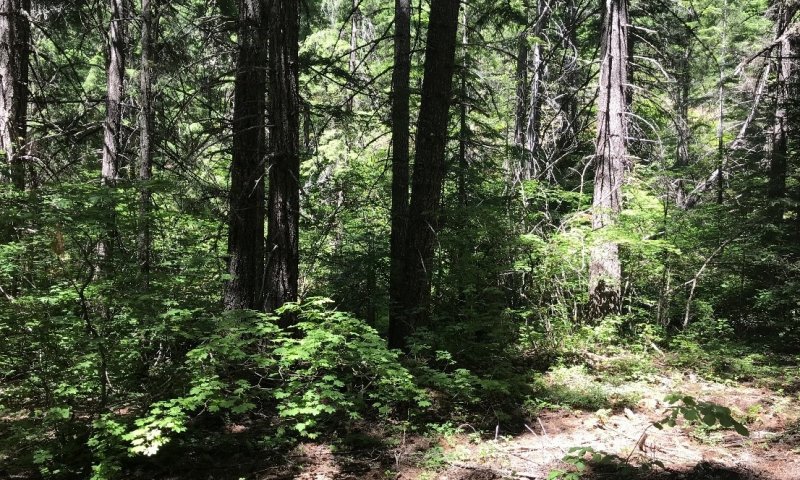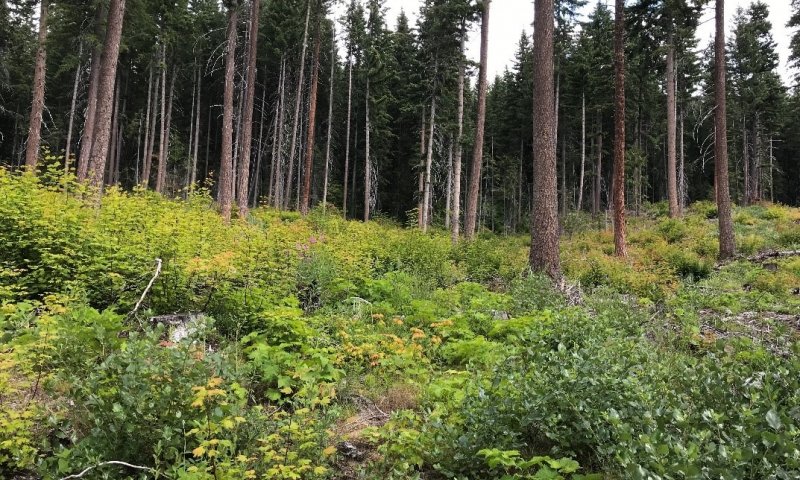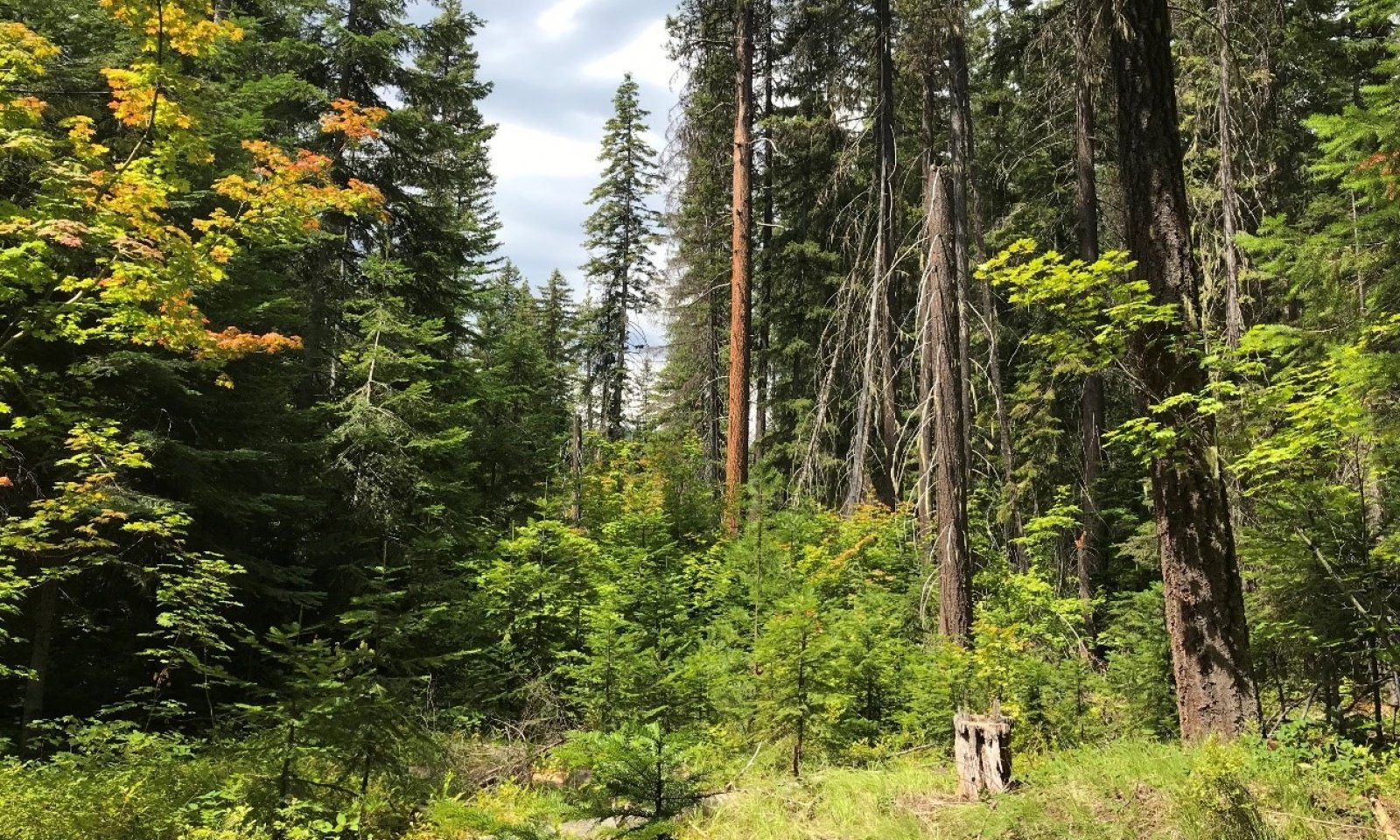

Natural Resources
Conservation Service
Ecological site F006XD001WA
Frigid Moist Xeric Ashy Slopes (Grand fir Warm Moist Shrub/Herb)
Last updated: 9/11/2023
Accessed: 01/10/2025
General information
Provisional. A provisional ecological site description has undergone quality control and quality assurance review. It contains a working state and transition model and enough information to identify the ecological site.
MLRA notes
Major Land Resource Area (MLRA): 006X–Cascade Mountains, Eastern Slope
Major Land Resource Area (MLRA): 006X–Cascade Mountains, Eastern Slope.
Stretching from northern Washington to southern Oregon, MLRA 6 encompasses the mountain slopes, foothills, elevated plateaus and valleys on the eastern slopes of the Cascade mountains. This MLRA is a transitional area between the Cascade Mountains to the west and the lower lying Columbia Basalt Plateau to the east. Situated in the rain shadow of the Cascade Crest, this MLRA receives less precipitation than portions of the cascades further west and greater precipitation than the basalt plateaus to the east. Geologically, the majority of the MLRA is dominated by Miocene volcanic rocks, while the northern portion is dominated by Pre-Cretaceous metamorphic rocks and the southern portion is blanketed with a thick mantle of ash and pumice from Mount Mazama. The soils in the MLRA dominantly have a mesic, frigid, or cryic soil temperature regime, a xeric soil moisture regime, and mixed or glassy mineralogy. They generally are moderately deep to very deep, well drained, and loamy or ashy. Biologically, the MLRA is dominated by coniferous forest, large expanses of which are dominated by ponderosa pine, Douglas-fir or lodgepole pine. Areas experiencing cooler and moister conditions include grand fir, white fir, and western larch while the highest elevations include pacific silver fir, subalpine fir and whitebark pine. Economically, timber harvest and recreation are important land uses in these forests. Historically, many of these forests would have experienced relatively frequent, low and mixed severity fire favoring the development of mature forests dominated by ponderosa pine or Douglas-fir. In the southern pumice plateau forests, less frequent, higher severity fire was common and promoted the growth of large expanses of lodgepole pine forests.
LRU notes
Common Resource Area (CRA) 6.8 - Oak-Conifer Eastern Cascades - Columbia Foothills
This LRU occurs predominantly on slopes of hills and mountains. The soils are dominantly in the Alfisols and Andisols taxonomic order, with some Inceptisols . Soil parent materials are dominantly colluvium and residuum from igneous, sedimentary, and metamorphic rock, glacial outwash, and glacial till, with a mantle or mixture of volcanic ash in the upper part. Taxonomic soil climate is primarily a frigid temperature regime and xeric moisture regime with average annual precipitation of about 45 inches.
Other LRU'S where the site occurs:
CRA 6.5 - Chiwaukum Hills and Lowlands
CRA 6.6 - Yakima Plateau and Slopes
CRA 6.7 - Grand Fir Mixed Forest
Classification relationships
CWS551 (WEN): 7 (YAK IND) – Grand fir/vine maple (ABGR/ACCI)
CWS552 (WEN) – Grand fir/vine maple-princes pine (ABGR/ACCI-CHUM)
CWS553 (WEN) – Grand fir/vine maple/queencup beadlily (ABGR/ACCI/CLUN)
Associated sites
| F006XD002WA |
Cool Frigid Xeric Ashy Slopes (Grand fir Cool Dry Grass) On slightly drier sites. |
|---|---|
| F006XB001WA |
Frigid Xeric Mountain Slopes (Douglas-fir Moderately Dry Shrub/Herb) On drier sites. |
Similar sites
| F006XC003WA |
Cool Frigid Moist Xeric Mountain Slopes (Grand fir Cool Moist Shrub/Herb) Cooler and in drainages and northerly slopes. |
|---|
Table 1. Dominant plant species
| Tree |
(1) Abies grandis |
|---|---|
| Shrub |
(1) Acer circinatum |
| Herbaceous |
Not specified |
Click on box and path labels to scroll to the respective text.
Ecosystem states
| T1A | - | Severe fires |
|---|---|---|
| R2A | - | Control of shrub competition and replanting |
State 1 submodel, plant communities
| 1.1A | - | Stand replacing fire |
|---|---|---|
| 1.2A | - | Tree regeneration |
| 1.3B | - | Stand replacing fire |
| 1.3A | - | Pole stands allow shrubs, herbs and tree regeneration |
| 1.4A | - | Old growth dynamics |
| 1.4B | - | Stand replacing fire or mixed severity fires |
